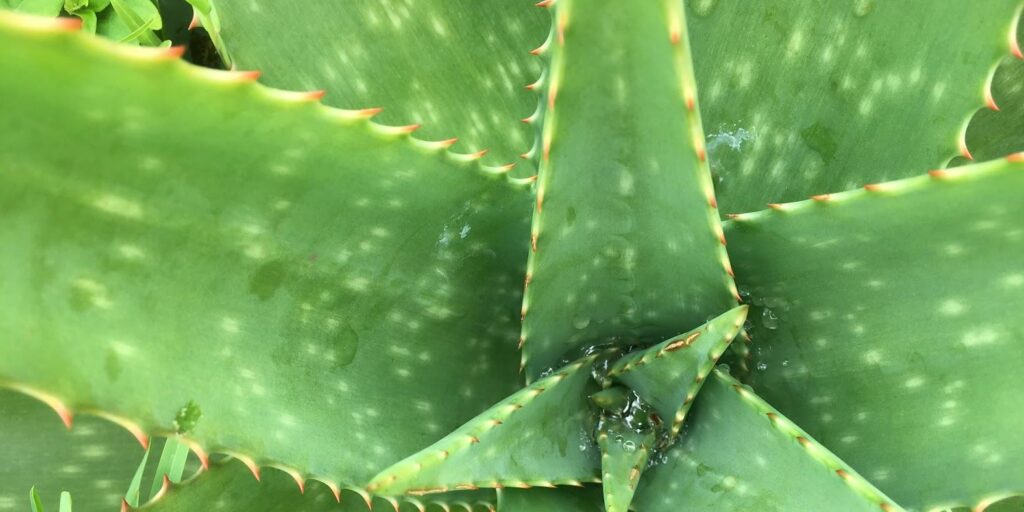Side effects from consuming aloe vera have already been observed, such as discomfort, hypothermia, slowed heartbeat, vomiting, and diarrhea. However, the EFSA (European Food Safety Authority) highlighted possible long-term health damages. The hydroxyanthracene derivatives, molecules found in aloe vera, may damage DNA and be carcinogenic.
Following this discovery in January 2018, the DGCCRF (General Directorate for Competition Policy, Consumer Affairs and Fraud Control) issued a press release to alert the public and also to engage ANSES (French Agency for Food, Environmental and Occupational Health & Safety).
Aloe vera carcinogenic and genotoxic according to EFSA
Aloe vera extracts have been analyzed in vitro. The EFSA study revealed the genotoxicity of hydroxyanthracene derivatives, even in vivo. The complete aloe vera extract was also found to be carcinogenic.
Beyond aloe vera, this molecule is present in several fruits, leaves, and barks. Regarding aloe vera, the molecule is mainly present in Aloe ferox Miller and its hybrids.
This molecule must therefore be removed from the plant. The commercial raw materials produced in the aloe vera industry include gels, powders, and jelly.

The aloe vera leaves consist of two layers: the outer crust and the soft, colorless inner gel. There are different techniques for processing these leaves. These processes vary depending on the intended use of the aloe vera. Some products contain pure gel, while others are made from a mix of gel and bitters.
The presence of hydroxyanthracene derivatives in aloe can be minimized in various ways. For example, the entire aloe vera leaf can be cut and ground into a paste, which is then pressed to obtain a liquid. The harmful molecules are then removed through passage over a series of filter presses plated with carbon (this is called the decolorization process).
The presence of the molecule in the juice can also be minimized by using the inner leaf as the starting material. The outer crust of the leaves is separated from the internal pulp, from which the juice is extracted.
There is no single method for extracting these compounds, but it remains possible.
The risks of aloe vera revealed by the DGCCRF
The problem lies in the fact that fresh aloe vera leaves are offered for sale for consumers to cook themselves. The sites or packaging of fresh leaves generally do not explain the proper preparation method, which allows for the removal of harmful substances, and the risks associated with consuming the latex.
Latex is the yellow-colored liquid secreted by the outer part. This part is rich in laxative substances that cause a very potent, often constraining laxative effect. Preparing your own concoction can therefore be harmful to our health.
Following the alert raised by the Ministry of Health, the DGCCRF explains in its press release that the outer part, as well as any presence of latex, must be eliminated to consume the transparent gel located at the center of the leaf, after cooking.
Consumption recommendations
In the press release, the DGCCRF and DGS (General Directorate of Health) engaged ANSES to assess the risks associated with dietary use of fresh leaves.
These risks have not yet been assessed, they do not discourage the consumption of fresh leaves. However, they stress the need to take precautions.
While awaiting the results, they strongly recommend that pregnant or breastfeeding women, as well as vulnerable individuals and children, avoid consuming this plant.
For now, it is preferable to consume this food, with genuine virtues, under safe conditions – with preparations made by an expert, for example.



